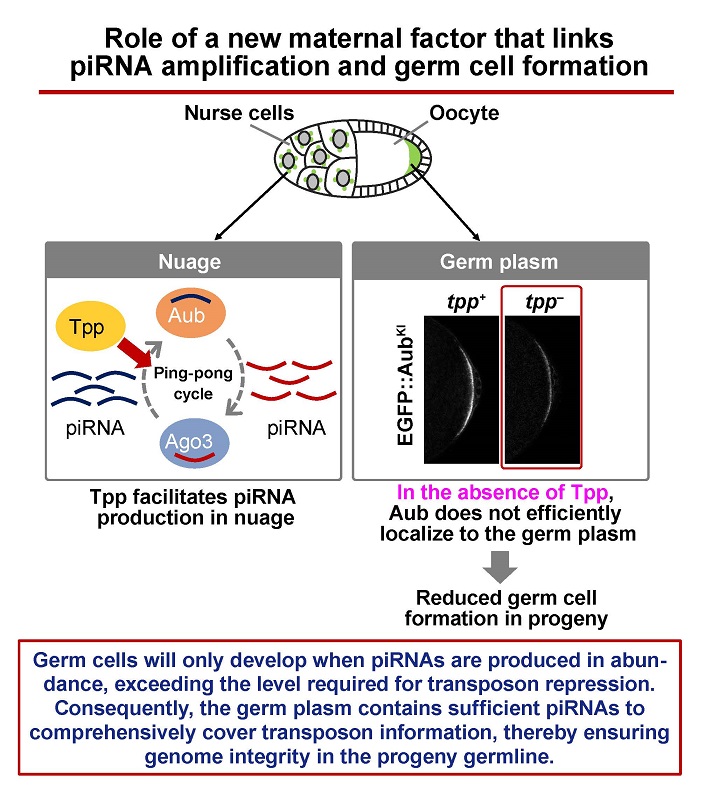
Abundant piRNA production mediated by the Drosophila GTSF1 homolog Tpp ensures Aubergine localization and germ plasm assembly
Journal:PNAS
Author:Hirono Kina, Natsuko Izumi, Kazuko Hanyu-Nakamura, Takashi Yoshitani, Mariko Yamane, Hitoshi Niwa, Yukihide Tomari, and Akira Nakamura
doi:10.1073/pnas.2419375122
Germ cells transmit genetic information to offspring and maintain the genome of the species. In many animals including Drosophila, germ cell formation relies on maternal determinants in the germ plasm. Several proteins present in the germ plasm of oocytes also localize to the perinuclear nuage in nurse cells, where they contribute to the production of PIWI-interacting RNAs (piRNAs). These piRNAs guide the silencing of transposons, thereby protecting the germline genome from invading mobile elements. Aubergine (Aub) is a germ plasm/nuage protein and a piRNA-directed endonuclease that inactivates transposons. Aub is also essential for germ plasm assembly. The Aub-bound piRNAs in the germ plasm are inherited by the progeny germline and serve as templates for piRNA biogenesis in the next generation. Thus, piRNA production in the nurse cell nuage is thought to be coordinated with germ plasm assembly in the oocyte. However, the underlying mechanism remains unclear. Here, we report that a maternal factor, named tiny pole plasm (tpp), mediates this coordination. Tpp is a GTSF1 family PIWI co-factor. In tpp− ovaries, the production of piRNAs, particularly Aub-bound piRNAs, is defective, resulting in reduced Aub localization to the germ plasm and impaired germ cell formation. Notably, the levels of piRNA production required for proper Aub localization are much higher than those required for transposon silencing. We propose that producing abundant piRNAs beyond what is required for transposon silencing in the ovary promotes germ plasm assembly, thereby enabling the progeny germline to properly silence transposons for species survival.
